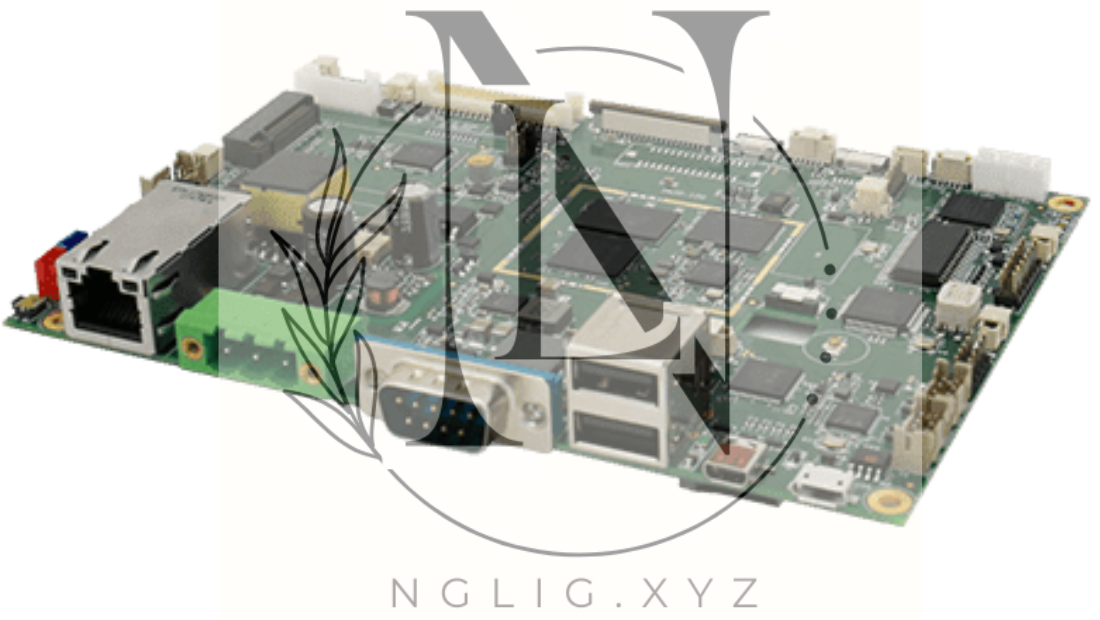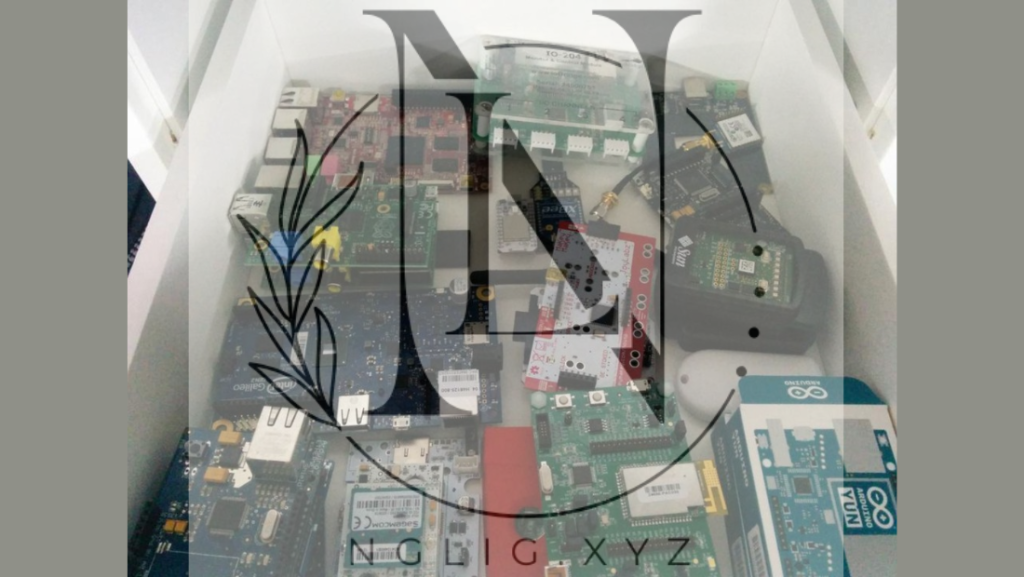Blog
Why Broadcom Microcontrollers Are Essential for High-Performance IoT and Embedded Systems
In the rapidly evolving world of the Internet of Things (IoT) and embedded systems, performance, energy efficiency, and connectivity are critical factors that drive the success of these technologies. Microcontrollers (MCUs) play a pivotal role in enabling the functionality of IoT devices, smart appliances, wearables, and industrial automation systems. Among the many companies that manufacture microcontrollers, Broadcom stands out as a leader, offering advanced solutions that address the growing demands for high performance, low power consumption, and flexible connectivity in a wide variety of applications.
In this article, we will explore why Broadcom microcontrollers are essential for high-performance IoT and embedded systems, diving into their key features, advantages, and how they contribute to the development of cutting-edge applications in fields like smart homes, automotive, wearable technology, and industrial IoT.
1. What Are Broadcom Microcontrollers?
A microcontroller is a compact integrated circuit (IC) that contains a processor, memory, and programmable input/output peripherals—all on a single chip. These devices serve as the “brain” of embedded systems, controlling and managing the functions of electronic devices.
Broadcom is a leading provider of microcontroller solutions that are widely used across IoT devices, industrial applications, automotive systems, and consumer electronics. Broadcom’s MCUs are built to deliver exceptional performance, low power consumption, and seamless connectivity, all of which are crucial in today’s increasingly interconnected and power-efficient world.
Broadcom’s portfolio includes microcontrollers that support a variety of connectivity standards such as Wi-Fi, Bluetooth, Zigbee, Thread, and Ethernet, making them suitable for a broad range of applications. These microcontrollers are designed to handle complex tasks while maintaining optimal energy efficiency—ideal for battery-powered and low-power devices.
2. Key Features of Broadcom Microcontrollers
A. High Performance for Complex Applications
One of the defining features of Broadcom’s microcontrollers is their high performance. IoT devices are no longer simple sensors transmitting small amounts of data. Today’s connected systems require MCUs that can handle complex algorithms, process large data streams, and interface with multiple peripherals.
Broadcom’s microcontrollers integrate high-speed processors (typically ARM-based cores) that are capable of executing demanding tasks such as:
- Signal processing
- Machine learning algorithms
- Image and video processing
- Data encryption and security
With their powerful processing capabilities, Broadcom MCUs are designed to power smart sensors, video surveillance cameras, wearables, and other performance-intensive devices. Their ability to handle complex data processing locally allows for reduced latency and faster decision-making, which is crucial for applications like real-time monitoring and control systems.
B. Low Power Consumption
One of the biggest challenges for IoT and embedded systems is power efficiency. Many IoT devices are battery-operated and need to run for long periods of time on a single charge. Broadcom’s microcontrollers are designed with low-power consumption in mind, enabling devices to perform at their best while minimizing energy use.
Broadcom MCUs utilize advanced power-saving techniques, such as:
- Low-power modes (sleep, standby, etc.)
- Dynamic voltage and frequency scaling (DVFS)
- Efficient clock management
This enables devices like wearables, smart thermostats, sensors, and connected medical devices to operate for months or even years without frequent battery replacements, which is a major advantage in many IoT applications.

C. Seamless Connectivity
For IoT devices to work efficiently, they need to communicate with other devices or cloud-based systems. Broadcom microcontrollers come equipped with multiple connectivity options that allow for easy integration into wireless networks and smart ecosystems.
Some of the most popular communication protocols supported by Broadcom MCUs include:
- Wi-Fi (for high-speed data transmission over a network)
- Bluetooth (for short-range communication in devices like smartwatches and headphones)
- Zigbee and Thread (for low-power mesh networks used in home automation)
- LoRaWAN (for long-range, low-power IoT applications)
- Ethernet (for wired networking in industrial and automotive applications)
By supporting these standards, Broadcom MCUs enable developers to build devices that are easily integrated into various networked environments, whether they are home automation systems, industrial IoT networks, or smart healthcare applications. The flexible connectivity options make Broadcom microcontrollers a versatile choice for a wide range of IoT solutions.
D. Robust Security Features
In today’s interconnected world, security is more important than ever, especially for IoT and embedded systems that transmit sensitive data. Broadcom’s microcontrollers are equipped with robust security features to protect devices and networks from cyber threats. These features include:
- Hardware-based encryption
- Secure boot (to ensure only authenticated firmware runs on the device)
- Trusted execution environments (for secure data processing)
- Secure key storage
By incorporating advanced security protocols directly into the microcontroller, Broadcom ensures that devices powered by their MCUs are less vulnerable to attacks such as data breaches and malware. This is especially important for applications in sectors like healthcare, finance, and industrial automation, where security is paramount.
E. Real-Time Capabilities
In many embedded and IoT applications, real-time performance is essential. Whether it’s for controlling a robotic arm, managing industrial processes, or responding to changes in environmental conditions, Broadcom microcontrollers are designed to deliver real-time responsiveness. Their support for real-time operating systems (RTOS) and interrupt handling ensures that time-sensitive tasks are executed without delay, making them ideal for industrial automation, autonomous vehicles, and robotics.
3. Applications of Broadcom Microcontrollers in IoT and Embedded Systems
Broadcom’s microcontrollers are integral to a wide range of applications, enabling businesses to leverage the power of connectivity, high performance, and security in IoT and embedded systems. Let’s look at some key sectors that benefit from Broadcom’s microcontrollers:
A. Smart Homes and Consumer Electronics
Broadcom MCUs are used extensively in smart home devices, such as:
- Smart thermostats
- Smart lighting
- Home security systems
- Voice assistants
In these applications, Broadcom microcontrollers enable seamless connectivity, real-time data processing, and energy-efficient operation. Their ability to support Bluetooth, Wi-Fi, and other wireless protocols ensures that smart home devices can communicate with each other and with cloud-based platforms to create a unified, intelligent home ecosystem.
B. Wearable Technology
The wearable technology market has exploded in recent years, with devices like smartwatches, fitness trackers, and health monitoring devices becoming increasingly popular. These devices require microcontrollers that balance high performance with low power consumption to ensure long battery life and accurate data tracking.
Broadcom microcontrollers are ideal for this purpose, offering support for:
- Bluetooth Low Energy (BLE) for wireless communication
- Low-power modes for extended battery life
- Sensor integration for tracking health metrics (heart rate, steps, etc.)
C. Industrial IoT (IIoT)
Broadcom MCUs also play a crucial role in industrial IoT (IIoT) applications, which include:
- Predictive maintenance
- Asset tracking
- Remote monitoring of machinery
- Supply chain management
In industrial environments, reliability, real-time performance, and connectivity are essential. Broadcom microcontrollers offer the performance and connectivity options needed for real-time data collection and decision-making in industrial automation systems. Their support for Ethernet, Wi-Fi, and LoRaWAN ensures that industrial devices can communicate over both short-range and long-range networks.
D. Automotive
In the automotive industry, Broadcom microcontrollers are used in applications such as:
- Infotainment systems
- Advanced driver-assistance systems (ADAS)
- Vehicle-to-everything (V2X) communication
Broadcom’s microcontrollers are built to handle the high performance and reliability required in automotive systems. They enable features like real-time sensor processing, in-vehicle networking, and secure communication between devices, all while adhering to the automotive industry’s stringent safety and security standards.
4. Conclusion
Broadcom microcontrollers play a crucial role in enabling high-performance IoT and embedded systems. Their combination of processing power, low power consumption, flexible connectivity options, and robust security features make them ideal for applications ranging from consumer electronics and smart homes to industrial IoT and automotive systems.
As the demand for more connected, efficient, and intelligent devices grows, Broadcom is positioned at the forefront of the MCU market, offering solutions that can meet the ever-increasing performance and reliability demands of the IoT landscape. Whether you’re designing a smart thermostat, a wearable fitness tracker, or an industrial automation system, Broadcom’s microcontrollers provide the foundation for building next-generation devices that are powerful, secure, and energy-efficient.

